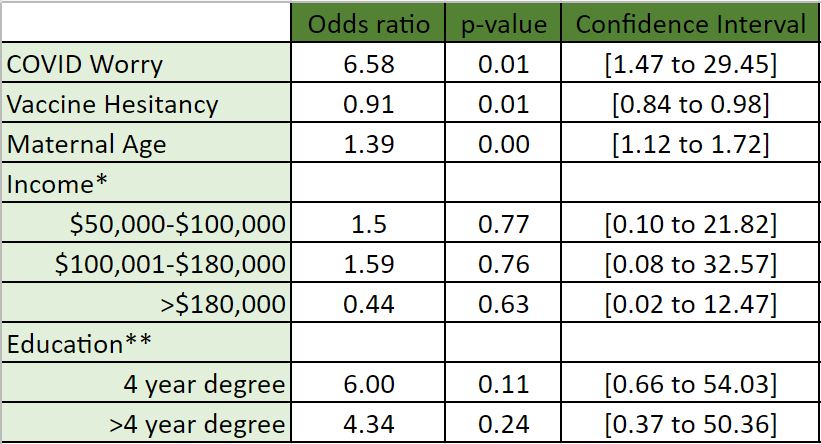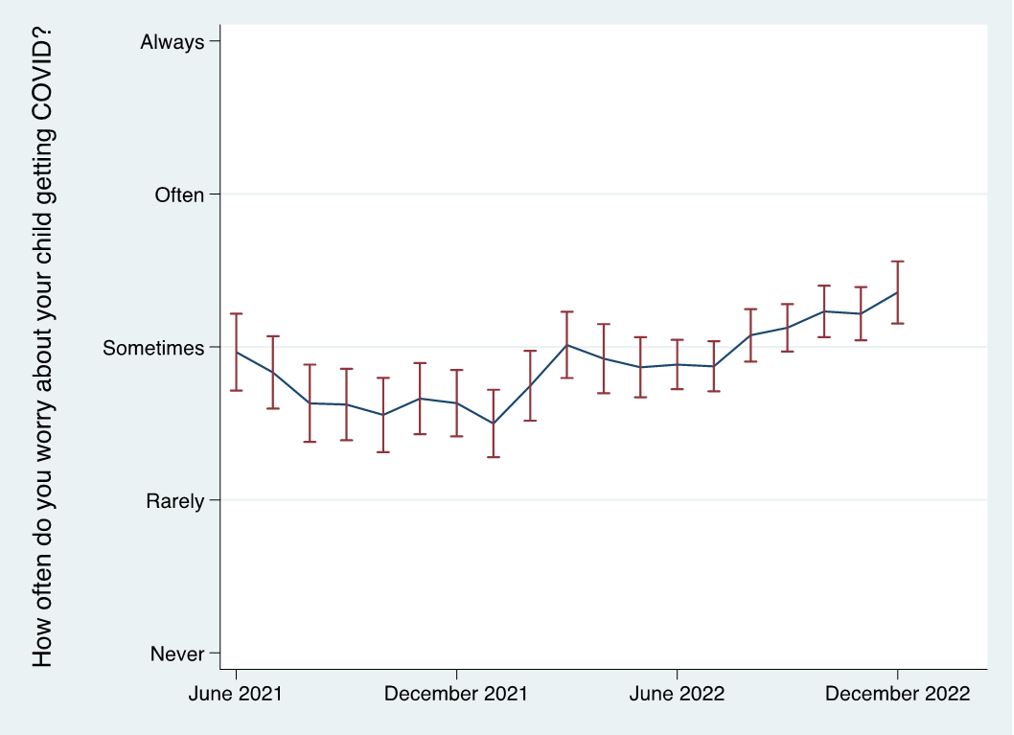Public Health & Prevention
Public Health & Prevention 1
83 - Maternal Worry of Children Contracting COVID-19 Predicts Infant Vaccination Status
Friday, April 28, 2023
5:15 PM - 7:15 PM ET
Poster Number: 83
Publication Number: 83.149
Publication Number: 83.149
Kristen Keene, University of Vermont Medical Center, Burlington, VT, United States; Leigh-Anne Cioffredi, The University of Vermont Children's Hospital, Burlington, VT, United States; Alexandra Potter, Department of Psychiatry, Burlington, VT, United States

Kristen Keene, MD (she/her/hers)
Resident Physician
University of Vermont Medical Center
Burlington, Vermont, United States
Presenting Author(s)
Background: Despite availability of COVID vaccines, many young children remain unvaccinated, and studies show many parents do not intend to vaccinate their children. Hesitancy is correlated with lower maternal age, non-healthcare professionals, vaccine safety concerns, lower education level, and low socioeconomic status. Identifying correlates of vaccine adherence is also important. We hypothesized that worrying more about children contracting COVID would lead to higher rates of early childhood (6 months to 5 years) vaccination.
Objective: To evaluate the effect of worry of infection on early childhood vaccination status.
Design/Methods: In June 2020, perinatal women were enrolled in a longitudinal study. Questionnaires at baseline and monthly thereafter assessed life changes related to the pandemic. In January 2021, surveys included worry of infection, Parents Attitude about Childhood Vaccines (PACV), and intention to vaccinate children. Worry of infection was measured on a 5-point Likert scale. In October 2022, surveys included child vaccination status and current worry of infection. Worry of infection was collapsed as a dichotomous variable for regression analyses. A demographic-adjusted stepwise logistic regression was conducted to assess the relationship of worry of infection and vaccine hesitancy on infant vaccination status.
Results: 85 women completed baseline and follow up surveys. Mothers were highly adherent to adult COVID vaccines with 93% at least partially vaccinated and only 3% demonstrated general childhood vaccine hesitancy on the PACV. However, in this highly adherent population, only 61% of young children are vaccinated. In univariate [OR =7.35 95% CI (2.70 to 20.02)] and demographic adjusted [OR =6.58 95% CI (1.47 to 29.45)] models, current worry about child infection was associated with higher odds of child vaccination (table 2). Additionally, average rating of worry of child infection is increasing (graph 1). Previously established predictors, vaccine hesitancy [OR =0.91 95% CI (0.84 to 0.98)] and younger maternal age [OR = 1.39 95% CI (1.13 to 1.72)] were again associated lower odds of child vaccination (table 2).
Conclusion(s): Among vaccine adherent parents there is hesitancy to have young children vaccinated against COVID. Worry of infection was a strong predictor of vaccine uptake. Worry is increasing in this population, which may predict a rise in vaccine uptake. Continued efforts to articulate the potential morbidity of COVID in young children, along with established methods to address general vaccine hesitancy may aid in COVID vaccine uptake in this population.



